Final report for GS19-218
Project Information
Local growers selling at farmers’ markets in the United States face challenges of perishable crops and competitive marketplaces often resulting in surplus produce. Value-added foods can be created by processing surplus produce into sauces, jams, dried herbs, or other products that make local food available for consumers which benefits local economies and farmer incomes. The University of Arkansas System Division of Agriculture worked with a farmer’s market in Rogers, AR to produce value-added products from market surplus (2018) and to collect data on produce type, availability, and price (2018 and 2019) to assess the economic feasibility of using farmer’s market surplus for value-added products. Since the project ends November 15, 2019, we propose to use the data collected and experience gained from the project to produce educational resources for farmer’s market managers, vendors, and growers interested in developing their own value-added products from surplus produce. The potential for use of farmer’s market surplus for value-added production will be demonstrated by: 1. interpreting data collected on produce type, availability, and price (2018 and 2019), 2. creating educational resources including an infographic (visual image to demonstrate steps to turn surplus produce into value-added products) and a factsheet (how produce availability varies and steps to creating value-added products from surplus produce), and 3. disseminating content by attending farmers’ market meetings and hosting workshops on “Using Surplus Produce to Create Value-added Food Products.” The overall purpose of this project is to strengthen Arkansas local food systems through unexplored sustainable uses of surplus produce.
- Evaluate farmer’s market produce item type, availability, and price to identify potential value-added products that could be created from surplus produce;
- Develop educational resources to create value-added production from surplus produce;
- Disseminate content on value-added products created from farmer’s market surplus.
Cooperators
- (Educator and Researcher)
- (Educator and Researcher)
Research
The farmer’s market produce data collection from 2018 and 2019 was funded by a grant from the Arkansas Department of Agricultural Specialty Crop Block Grant and was used to implement the objectives of this project from August 2019 to August 2021 funded by a Southern Sustainability Agriculture Research & Education. “The Original Rogers Farmers Market” used in the project was located in Rogers, AR which was open Wednesday and Saturday in May to September. This initial research was funded by a grant from the Arkansas Department of Agricultural Specialty Crop Block Grant.
Materials and Methods for Objective 1: Evaluate farmer’s market produce item type, availability, and price to identify potential value-added products that could be created from surplus produce
Surplus produce was collected for the market season June 1-September 5, 2018. Produce was donated by and/or purchased from participating vendors. About 4-13 vendors participated in this project weekly. The produce was purchased at half the daily market value ($2,460 spent from another grant as incentive for participation), but 19.3% of produce collected was donated. There were 34 types of produce (924 lb) collected with the top five produce collected including tomatoes (56.5%), peppers (12.1%), squash/zucchini (5.5%), onions (4.8%), and corn (3.7%). The produce was taken to the Arkansas Food Innovation Center (food manufacturing facility in Fayetteville, AR). The produce was weighed, pre-processed (washed, trimmed, and sliced depending on produce type), weighed again, flash frozen (-31 °C), placed in 3-mm food grade plastic bags, vacuumed sealed, and frozen (-10 °C). Three products, tomato sauce, zucchini/squash flour, and dried herb packets were formulized and created by April 2019). There was 893 lb of pre-processed produce from the farmers market. Since tomatoes were the majority (568 lb) of the produce, a tomato sauce was developed as the primary value-added product and economic feasibility was determined.
The project team analyzed type, price, and availability of farmer’s market produce data from 2019 to track seasonal trends for the farmers market. This market had 20 vendors from Arkansas and Oklahoma but only 4-8 produce vendors weekly. The produce availability was tracked May 18-September 11, 2019 by visual evaluation of produce items sold, and price was collected on items from each vendor. The data was recorded for 18 weeks and organized by individual vendor and averaged across all vendors by week, month, and market season. Data was tracked through the market season to determine trends in produce item availability and price. The produce item availability was calculated as percent of vendors selling a produce item multiplied by the percent of markets at which the item was available. The percent of vendors selling each produce item was calculated, while the price of produce at each market was tracked over time
Materials and Methods for Objective 2: Develop educational resources to create value-added products from farmer’s market surplus
The project team developed an infographic, factsheets, and other digital content to use as educational resources. An infographic was created using Visme (https://www.visme.co/ ) a free/subscription service that provides templates, graphics, and assets for non-designers to create resources for visual communications. The infographic was saved as a digital image. The factsheets were initiated by Gramlich but finalized by Threlfall and McWhirt. The full color, multiple-page factsheets were edited and published by the UA System Cooperative Extension Service in late 2020.
Materials and Methods for Objective 3: Disseminate content on value-added products created from farmer’s market surplus
The content developed for this project was disseminated from Spring 2020 to Summer 2021 to state and regional farmers markets and supported other programs on value-added production. The Covid pandemic impacted the dissemination efforts for the project since in person events were not allowed in Spring and Summer 2020. The plans for hosting local and regional meetings from January to July 2020 were modified to virtual content.
Results and Discussion for Objective 1: Evaluate farmer’s market produce item type, availability, and price to identify potential value-added products that could be created from surplus produce
From the 2018 farmers market surplus produce, 600 one-quart jars of tomato sauce were produced with an anticipated value of $3,600 ($6.00/jar) (Figures 1 and 2). The analysis of economic feasibility estimated $133 in net returns for year 1 and $363 for year 2 from production and sales of the tomato sauce. The top three costs for the tomato sauce production were labor, facility rental, and jars/labels. Opportunities to improve the economic feasibility of this model include using different production facilities with lower costs, reducing labor costs, creating different products to reduce production costs, or implementing at a larger farmers market with more surplus and varied produce.
In terms of produce availability during 2019 market season, vendors sold 66 different produce items. Five produce items (squash, cucumber, zucchini, tomato, and potato) were the most highly available (59-72%) throughout the season (Table 1). Squash was most available (71.59%).
The percent of vendors with produce items for sale (Figure 3) included the following:
- 75% had squash June 15-July 10
- 100% had cucumbers July 3-10
- 80% had zucchini June 19-22
- 80-100% had tomatoes July 10-August 31
- 100% had potatoes May 25 and September 11
The seasonal low prices for the five most available produce items (Figure 4) were as follows:
- Squash: July 20 at $2.06/lb
- Cucumber: July 6 at $1.64/lb
- Zucchini: July 17-20 and August 7-10 at $2.06/lb
- Tomato: June 29-July 6 at $2.05/lb
- Potato: July 27 at $4.80/lb
High produce availability on a given date resulted in a lower average price for that item, which demonstrated basic rules of supply and demand. Using this data, the optimal date for high produce availability and low price at “The Original Rogers Farmers Market” for the top five most available produce items were June 29-July 10 for squash, zucchini, cucumber, and potato and July 13-20 for tomatoes. It was recommended to develop products that contain large quantities of the produce items that were consistently highly available because of the significant discount produce vendors are willing provide when they have surplus. Examples of products that could be made from this surplus include tomato sauce, salsa, and pickles. Data from this research will help farmers and farmers markets to evaluate the economic potential of value-added products created from surplus produce at farmers markets.
Results and Discussion for Objective 2: Develop educational resources to create value-added products from farmer’s market surplus
The infographic, factsheets and other digital content were created and used as educational resources. The “Steps for Value-added Food Production” infographic was used as a tool to encourage audiences to pursue value-added production, but also used in other presentations and a factsheet (Figure 5).
Two factsheets were created using knowledge gained during this project. The infographic was used in the factsheet designed to demonstrate how the availability of produce at a farmer’s market varies and to emphasize the key steps of creating value-added products from surplus produce. The factsheet entitled “Producing Value-added Food Products from Surplus Farm Produce” (https://www.uaex.edu/publications/pdf/FSA56.pdf ) detailed steps outlining how to create value-added products from farm surplus, rules and regulations for production, and tools to evaluate personal economic potential with the implementation of a value-added systems as part of a business model. The second factsheet entitled “Cost of Developing Value-added Food Products from Surplus Produce” (https://www.uaex.uada.edu/publications/pdf/FSA55.pdf) presented a cost analysis for producing value-added food products from surplus produce at a food manufacturing facility to evaluate economic potential with the implementation of a value-added systems as part of a business model.
Results and Discussion for Objective 3: Disseminate content on value-added products created from farmer’s market surplus
A one-hour webinar entitled “Producing Value Added Foods in Arkansas” was held April 21, 2020. The webinar was hosted by McWhirt. Threlfall presented on the basics of value-added food production and Gramlich presented on producing value-added food from farmers market surplus. The webinar had 45 people that attended live and 1,123 views as of August 2021. The webinar content can be found at https://www.youtube.com/playlist?list=PLs8WSjmcoHZcHD50WZ9-ad3ZkpRDyyPvC. The educational recourses from this project are still being utilized for other programs on value-added food production. Dissemination of the factsheets and webinar content enabled farmers and farmers markets to move profitably towards more sustainable production systems through reduction of food waste.
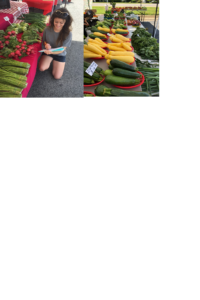
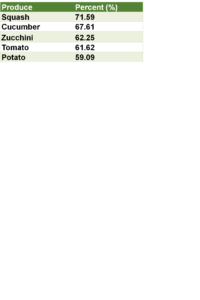
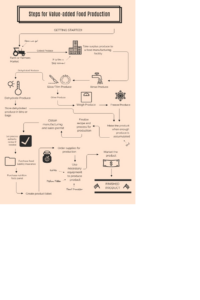
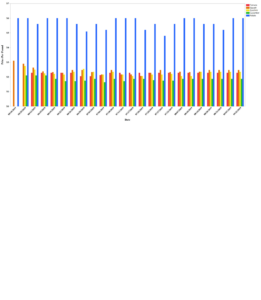
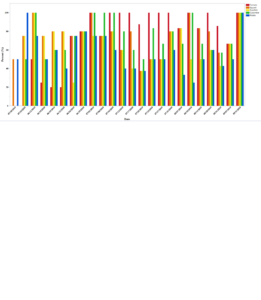
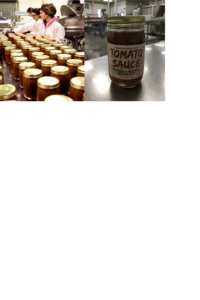
Educational & Outreach Activities
Participation summary:
Nonthesis Project Report
Morgan Gramlich, M.S. student, Department of Horticulture, Co advised Dr. Amanda McWhirt and Dr. Renee Threlfall. Nonthesis Project Title: Creating Value-added Products from Surplus Specialty Crops from a Farmer’s Market, 2018-2020.
Facts Sheets
Threlfall, R.T., A.L. McWhirt, M.R. Gramlich, M.R. Thomsen. 2020. Producing Value-added Food Products from Surplus Farm Produce. University of Arkansas System Division of Agriculture. FSA56, https://www.uaex.edu/publications/pdf/FSA56.pdf
McWhirt, A.L., R.T. Threlfall, M.R. Gramlich, M.R. Thomsen. 2020. Cost of Developing Value-added Food Products from Surplus Produce. University of Arkansas System Division of Agriculture. FSA55, https://www.uaex.uada.edu/publications/pdf/FSA55.pdf
Blog Posts
Gramlich, M., and R.T. Threlfall. Anticipating Farmers Market Surplus for Value-added Production.
Arkansas Fruit Vegetable and Nut Update, Cooperative Extension Service. August 27, 2019.
Gramlich, M., and R.T. Threlfall. Economic Feasibility of Value-Added Production from Farmer's Market Surplus. Arkansas Fruit Vegetable and Nut Update, Cooperative Extension Service. October 23, 2019.
Gramlich, M., and R.T. Threlfall. Examining Farmers Market Surplus for Value-added Production Potential. Arkansas Fruit Vegetable and Nut Update, Cooperative Extension Service.
Published Abstracts (*Denotes Speaker)
Gramlich, M.R.*, R.T. Threlfall, and A.L. McWhirt. 2020. Economic feasibility of creating value added products from farmers market surplus. HortScience 55(9) (Supplement 2) – 2020 SR-ASHS Annual Meeting. P. S379
Gramlich, M.R.*, R.T. Threlfall, and A.L. McWhirt. 2020. Anticipating farmers market surplus for creating value-added products. HortScience 55(9) (Supplement 2) – 2020 SR-ASHS Annual Meeting. P. S431
Gramlich*, M.R., R.T. Threlfall, and A.L. McWhirt. 2019. Producing Value Added Products from a Farmers Market Surplus. HortScience 54(9) (Supplement 2) – 2019 SR-ASHS Annual Meeting. P. S371
Gramlich*, M.R., R.T. Threlfall, and A.L. McWhirt. 2019. Tracking Availability of Farmers Market Surplus for Value Added Production. HortScience 54(9) (Supplement 2) – 2019 SR-ASHS Annual Meeting. P. S387
Oral Presentations Presented at Meetings (*Denotes Speaker)
Gramlich, M.R.*, R.T. Threlfall, A.L. McWhirt, M.R. and Thomsen, 2020. Producing value-added products from farmers market surplus. Arkansas-Oklahoma Horticulture Industries Show, January 3-4, Owasso, OK.
Gramlich, M.R.*, R.T. Threlfall, and A.L. McWhirt. 2020. Economic feasibility of creating value added products from farmers market surplus. Southern Region-American Society for Horticulture Science Annual Meeting. January 31-February 2, Louisville, KY.
Threlfall,* R.T., and M.R. Gramlich*, 2019. Creating Value-Added Products from Surplus Crops at a Farmers Market in Northwest Arkansas. Arkansas-Oklahoma Horticulture Industries Show, January 4-5, Fayetteville, AR.
Gramlich*, M.R., R.T. Threlfall, and A.L. McWhirt. 2019. Producing Value Added Products from a Farmers Market Surplus. Southern Region-American Society for Horticulture Science Annual Meeting. February 1-3, Birmingham, AL.
Gramlich*, M.R., R.T. Threlfall, and A.L. McWhirt. 2019. Producing Value Added Products from a Farmers Market Surplus. University of Arkansas Gamma Sigma Delta Graduate Competition, March 15, 2019, Fayetteville, AR.
Posters Presented at Meetings (*Denotes Speaker)
Gramlich, M.R.*, R.T. Threlfall, and A.L. McWhirt. 2020. Anticipating farmers market surplus for creating value-added products. Southern Region-American Society for Horticulture Science Annual Meeting. January 31-February 2, Louisville, KY. Poster #59
Gramlich*, M.R., R.T. Threlfall, and A.L. McWhirt. 2019. Tracking Availability of Farmers Market Surplus for Value Added Production. Southern Region-American Society for Horticulture Science Annual Meeting. February 1-3, Birmingham, AL. Poster #6G
Professional Awards
Gramlich*, M.R., R.T. Threlfall, and A.L. McWhirt. 2020. Economic Feasibility of Creating Value-added Products from Farmers Market Surplus. Second Place in Norman F. Childers Graduate Student Paper Award competition. Southern Regions American Society for Horticultural Science Annual Conference.
Webinar
McWhirt, A.L., R.T. Threlfall, and M.R. Gramlich. 2020. Producing Value Added Foods in Arkansas. April 21. https://www.youtube.com/playlist?list=PLs8WSjmcoHZcHD50WZ9-ad3ZkpRDyyPvC .
Project Outcomes
The educational resources from this project have been used for other programs on value-added food production. During this project, about 15 farmers that were vendors from the farmers market gained knowledge on the potential for utilization of surplus produce. This content has also been used in “The Share Grounds: Kitchen Incubator and Aggregation Center Development Project” that established three incubator and aggregation centers at Arkansas fairgrounds in Marshall, Rison, and McCrory. These Share Grounds kitchens are food manufacturing facilities where food products can be made for commercial markets (www.uaex.edu/sharegrounds ). Farmers and entrepreneurs (15-20) have used these facilities in 2021 to create value-added products to sell commercially. The content has been used as training material for staff and interns working on the Share Grounds project.
The content has also been used as training material for interns working on “Using Horticultural Farm Surplus to Create Value-added Foods at a Food Manufacturing Facility for Local Food Systems Project” to learn applied food innovation and extension/education skills using the Arkansas Food Innovation Center (AFIC) to produce value-added foods from surplus associated with horticultural aggregation from the Center for Arkansas Farms and Food (CAFF)
AFIC (https://afic.uark.edu/) is located in the UA System Food Science Department in Fayetteville, AR and is a food manufacturing facility used for commercial production of food products on a small to medium scale.
CAFF (https://farmandfoodsystem.uark.edu/) is located at the UA System Arkansas Agricultural Experiment Station in Fayetteville, AR and trains farmers and food entrepreneurs with production and business skills to develop businesses that sustain Arkansas land and communities.
Dissemination of the factsheets and webinar content enabled farmers and farmers markets to move profitably towards more sustainable production systems through reduction of food waste, as well as inspiring entrepreneurs in value-added food production enterprises. For future endeavors in value-added food production, we suggest using a larger farmer’s market with more vendors or community farm aggregation so that there would be more surplus produce potential.
Data from this research helped farmers, entrepreneurs, and educators learn more about evaluating the economic potential of value-added products created from surplus produce at farmers markets. This project strengthened Arkansas and other southern region local food systems through unexplored sustainable uses of surplus produce.